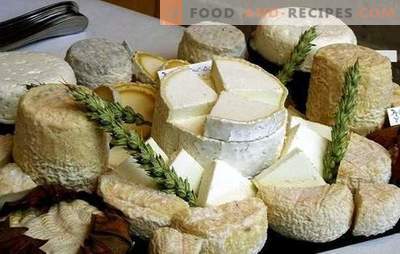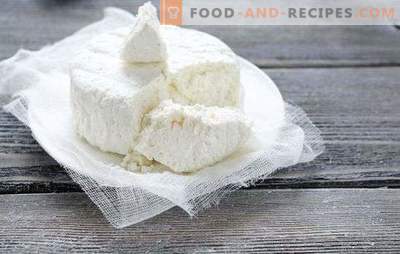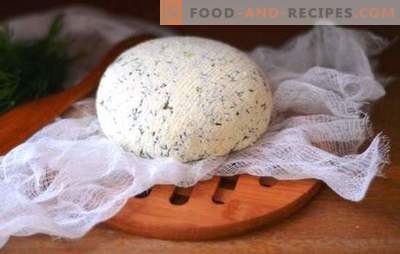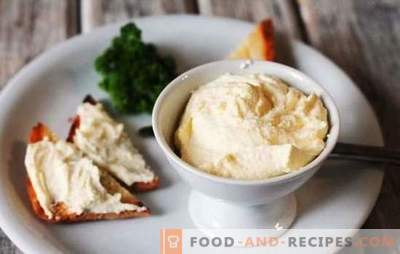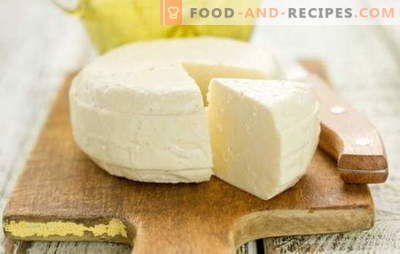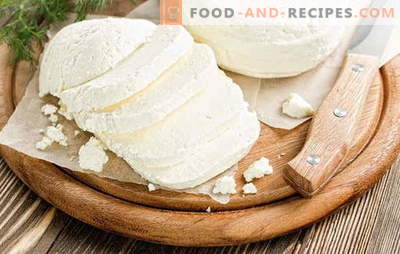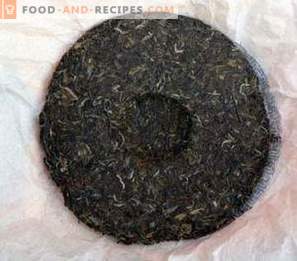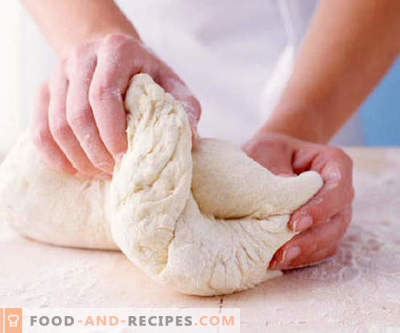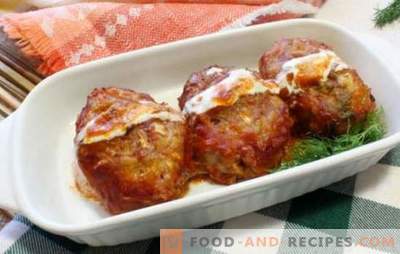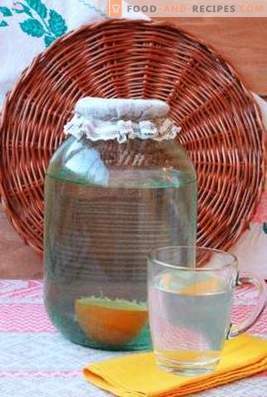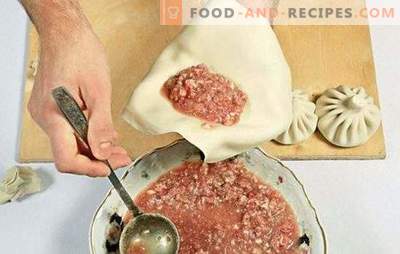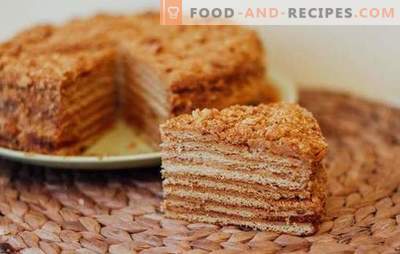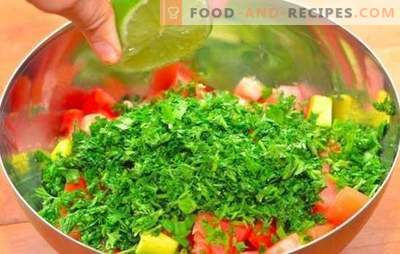
These and other famous names of cheeses, let's say honestly, make you want to see them more often on your table.
But, firstly, well-known world brands are not the cheapest pleasure, if we talk about a middle-income family, even though the statistics are always too high, and secondly, not every store can find the right assortment.
There is a third aspect that causes difficulty when buying a favorite product. Nevertheless, they understand that Philadelphia cheese is not brought from overseas, but is produced somewhere nearby, from what is, and this “what is” can only turn out to be cheese, but not cheese.
The question of what to do for a Russian person is rather rhetorical, or simply reminds one of the reading of a Russian classic of the same name in his youth. If you still remember how Lefty primed a flea, then making curd cheese at home so that it meets all the stated requirements is not a problem at all.
Cottage cheese cheese at home - basic technological principles
Among all the types of cheese created throughout human history, curd cheese is a separate and very extensive group, judging by the individual names and their place of origin. But combines cheese cheeses the same, with the exception of some individual nuances, the technology of their preparation.
Primarily, raw materials affect the variety and species diversity. Cheese is made from cow, goat, sheep, buffalo milk, so its taste and quality characteristics have differences. Sometimes, due to the lack of specific raw materials, for example, sheep milk is replaced by cow milk, as is the case with the production of “Feta” - this cheese in Greece, the country of origin, is traditionally made from goat or sheep milk, while in our country it can be made from cow's milk. The quality of milk and its biochemical composition also affects the technological process of cheese production and, as a result, its taste. For example, goat milk, because of its composition, coagulates worse than cow's milk, and therefore either special ferment and enzymes are used to make cheese, or goat's milk is mixed with cow's.
The first conclusion suggests itself: to prepare cottage cheese cheese at home, as well as any other cheese, the initial level of preparation of the dairy industry technologist is necessary for every housewife - after all, each of us, at least once in a lifetime, cooked cottage cheese in my kitchen. If something does not work out, then it's time to explore the issue of cheese making a little deeper.
The next aspect to be considered in more detail is the preparation of raw materials for cottage cheese at home.
In general, the technology of obtaining raw materials for all types of cheese is souring milk, raw or pasteurized. During fermentation, fermented milk bacteria are introduced or it occurs naturally. Further, to obtain the cheese grain, the milk is heated, coagulation (coagulation) of milk protein occurs. The resulting mass, cottage cheese, is separated from the whey.
Further technology for the preparation of cheeses has differences in density, method of manufacture.
Curd cheeses are fresh cheeses, which, after receiving curd grain, are not subjected to further heat treatment, melting and smoking. These cheeses have a soft, sometimes even pasty consistency, as well as this category includes semi-soft cheeses with cottage cheese or creamy flavor, cooked in a cold way. Fresh cheeses have a relatively short ripening time, they are subjected to very little pressing. This category of cheeses includes pickled cheeses (feta, cheese), as well as blue cheeses (Dorblu, Roquefort), special (Ricotta).
In addition to those already listed above, the most famous fresh cheeses can also be called Suluguni, Adyghe cheese and many others. Of course, this list can be expanded to several hundred names, because in every country of the world, and even in every city of the country, there are their own traditions of cheese making, but many cheese lovers do not even suspect that they have tried, at best, a couple of dozen of cheese titles from more than one and a half thousand existing in the world today. Since the technology of cooking cheese curds at home is simple and old as the world, and people knew it more than seven thousand years ago, it is better to focus on the most interesting recipes that will appeal to cheese gourmets.
Recipe 1. Dorblue - cottage cheese at home
Composition:
- Natural milk (homemade) 6 l
- Sour cream (20%) 500 g
- Acidin-Pepsin 9 tablets
- Dor Blue Cheese
- Salt - to taste
Preparation Procedure:
- Heat milk and sour cream to 25-30 ° C. Pill tablets into powder and dissolve in a small amount of warm water. It will take a small piece of the original cheese to remove the mold from it; You can buy it once to get a fungus culture, and after leaving a piece of homemade cheese for making the next batch of cheese. This trick will easily get the original taste of cheese.
- Important: The dishes, hands, and all items that will come into contact with the cheese during the preparation process must be sterile to prevent any other microorganisms from entering the blue cheese. Handle all objects and hands with alcohol.
- Approximately 0.5 l of milk should be warmed up and put into it the mold collected from the purchased cheese. Leave on for 30-40 minutes, after mixing the milk well. The rest of the milk, warm, combine with sour cream. Cover with a clean napkin and leave at 20-25 ° C for ripening.
- Carefully remove the formed clot with a skimmer and transfer it into the prepared mold with holes at the bottom for draining serum. Place a pallet under the form. It is better to serve as a deep pan as a pan, because the whole process of cooking and ripening cheese will take about 10-14 days, and all this time the cheese must be kept under sterile conditions, creating a special microclimate for it. But at the same time, the pan should not be tightly closed, since microorganisms need air for their vital activity.
- In the process of cooking, the cheese will have to be turned over several times, so prepare the second form: you can make them from plastic water containers (5 and 6 l). One of the forms should be slightly wider in diameter in order to make it convenient to put them together and turn the cheese.
- To make such shapes, cut off the top of the plastic jar, leaving a bottom with a wall height of 6-7 cm. In the bottom of each shape, make holes with a red-hot metal nail or screw; You can make such holes heated soldering iron. After making the form must be disinfected.
- When the milk clot becomes sufficiently dense (it should be pressed naturally, without pressure), gently rub its surface with common salt. Put the head on the dish, about 12 hours, to let the cheese dry out. If the whey will be released intensively, then it needs to be drained, blot the cheese with a napkin and processed again with salt.
- After that, take a medical syringe (20 mg) and, taking milk with mold in it, inject around the entire circumference of the cheese, from all sides, evenly.
- Further care for cheese until fully matured consists in daily turning over. Store it in a dark place, but at room temperature. Do not forget that you need to work with sterile hands. When the cheese acquires a characteristic smell, its surface will be covered with mold, wrap in parchment paper and put it in the refrigerator, it will ripen for another 7 days (if you don’t eat it before).
Recipe 2. Homemade Mozzarella cheese, as in the Italian village
Composition:
- Raw milk, homemade 5 l
- Lemon juice 100 ml
- Lipase 2.0 mg
Cooking:
- Pour lemon juice and rennet into warmed milk (20-25 ° C). Put the pot in a water bath, keep the temperature no higher than 30 ° C, stir for 2-3 minutes, and then stop stirring until a tight clot forms. Try to cut the clot evenly into squares with a side of 1.5 cm, and after 5-10 minutes increase the heating temperature by 10 ° C. Slowly, trying not to destroy the cubes, mix the mass until their density becomes sufficiently stable.
- In a sieve or colander, lined with gauze, after half an hour of continuous steam heating, gently drain the separated serum together with the clots that have formed. After separation of the serum, return the clot to the pan and gradually begin to pour in the water warmed to 70 ° C while collecting the clot with a wooden spatula from the edges to the center. As a result of this action, the curd should acquire a lasting consistency. Remove the brewed clot from the water with a skimmer and form 2-3 balls. To do this, mash the cheese first in the cakes, and then wrap the edges inside. This should be done while the cheese is warm and plastic. Put the balls for cooling in cold water, and then - in saline (100 g of salt per 1 liter of boiled water).
Recipe 3. Feta with mint
Composition:
- Goat and cow's milk, whole (50/50) 5 l
- Rennet (lipase, abomin, pepsin) 5 mg
- Citric acid (10% solution) 100 ml
- Salt, cooking - for brine (16%)
- Peppermint (dried) 100 g
Progress:
Pour the citric acid solution at room temperature and the prepared enzyme into the warm mixed milk (grind the tablets and dissolve in the warm milk). Pour chopped dried mint. Soak up the milk before souring at room temperature, but it should remain liquid until you start to warm it up on the stove. The heating temperature is not higher than 32 ° C. When the resulting clot rises to the surface, cut it into cubes (2-3 cm), and after five minutes, place them on the prepared gauze, carefully removing it with a skimmer from the surface of the separated serum. Gather the edges of the cheesecloth and hang the cheese to allow the remaining whey to drip onto the tray. After putting the cheese in the form and under the press. When the mass is compacted, cut it into cubes a second time and store in cooked brine.
Recipe 4. Creamy Philadelphia Paste
Composition of products:
- Natural yogurt 0.5 l
- Homemade cream 1.5 l
- Rennet 2 tablets
- Salt, kitchen
- Citric acid 5 g
Cooking:
- Dissolve tablets and citric acid in 250 ml of warm boiled water. When buying natural yogurt for making cheese, pay attention to the date of manufacture - it should be the freshest. If you can, cook it yourself, only choose natural milk with a high percentage of fat. Use regular kitchen salt, without additives. Yoghurt and cream should be warm to make the ripening faster.
- Prepare a thick cloth, cover it with a colander (it should fit the entire volume of cheese mass). Place the colander on the pan to drain off the whey, and you can start making cream cheese at home.
- Combine yogurt and cream in a saucepan. Pour into the lactic mass of the prepared solution of acid, salt and enzyme. Mix well and place in the warmest place in the kitchen, closer to the stove or to the battery. The time during which a clot appears depends on the temperature of the room. In principle, the mass can be heated in a water bath, but if you accidentally overheat, then the coagulated protein will brew much, and the consistency of soft and creamy cheese will not work. Therefore it is better to wait.
- Pour the contents of the pan into a colander. Cover with a napkin so as not to form a weathered crust. When the whey drains about half, and the cheese thickens noticeably, put the oppression on top. It will take about twelve hours to make this cheese, but it will be eaten much faster, especially if you make dessert or rolls for breakfast from it. In the evening, you have to start all over again.
Recipe 5. Pickled cheese with spicy herbs in wine sourdough
Composition:
- Wine, homemade, apple 0.7 l
- Whole milk, full fat 3 l
- Enzyme 3 mg
- Thyme, mint, basil (dry mix) 100 g
- Salt
Cooking:
Heat the milk (the fatter the better) to 30 ° C. Add the prepared enzyme solution to it, pour in a glass of warm apple wine, add dried herbs to the powder, mix. Wait for the formation of a dense clot. Remove it with a slotted spoon, transferring it to a colander lined with a cloth. Cover with a napkin, a saucer and put a yoke on top. When the cheese is sufficiently compacted, put it on the grid, sprinkle with salt on top, and then, after drying for 2-3 hours, put it together with the grid in a container, close and hide in the refrigerator. After one day, take out the cheese, wash it from the top with boiled water, blot with a napkin, and, after watering with wine, sprinkle with herbs, hide it again in a clean and dry container, put it in the refrigerator. Repeat this procedure for two weeks: “wash” the cheese with water, irrigate with wine and sprinkle with herbs. After that, if you don’t eat it all at once, wrap it in parchment for storage.
Recipe 6. Fruit cheese curd at home
Products:
- Strawberries 300 g
- Fructose 100 g
- Cream, natural (homemade) 1.5 l
- Sour cream (25%) 200 g
- Milk chocolate 300 g
Cooking:
Wash fresh strawberries (frozen berries can be used). Smash it with sour cream. Sourdough ready. Enter it into warm cream, add fructose, and leave it for souring. Collect the formed clot and put it in a gauze napkin. Tie the edges of the fabric and hang the cheese over a bowl for 3-4 hours. Arrange the creamy fruit cheese in cups. Cool and pour with melted chocolate.
Cottage cheese cheese at home - tips and tricks
- It is not always possible to purchase such an ingredient for homemade cheese, like mold or other cultures of microorganisms. But if you like Dorblu, Gorgonzola or other cheese with a specific taste, and you want these cheeses to be more often present in the diet, but they are not cheap, then just buy a small piece of your favorite cheese once to get the necessary microorganisms. They can be transplanted into fresh curd cheese, in the process of cooking, and, as the French say, “voilà” - enjoy your favorite cheese as soon as your heart desires.
- The best cottage cheese cheese at home can only be made from natural homemade milk.
